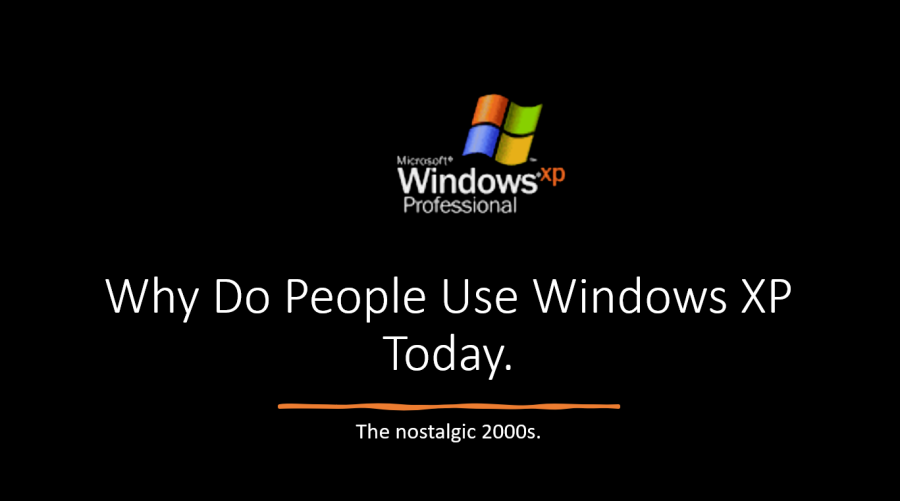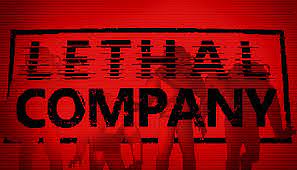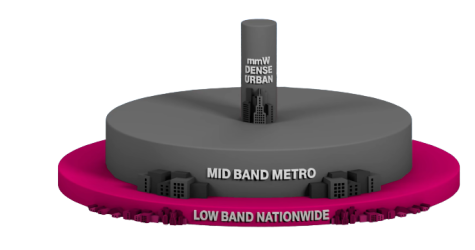Why So Many People Use Windows XP Today!
Last year when I wrote the story of Windows XP’s Development history back in November, a number of people and close friends reached out to me and were curious about whether or not I use Windows XP. Although it is very nostalgic, I don’t use it for obvious security reasons. Nevertheless, I was surprised to find out that many end-users still use Windows XP. An over 20-year-old operating system. But why? In 2001 Microsoft released Windows XP.
It was the OS that followed the releases of Windows ME and 2000. But the main direction XP intended to take was simplicity. Which makes sense. Microsoft made a killing with Windows 95, 6 years prior, and was not very much in the “If it ain’t broke… don’t fix it.” mentality. If you remember adults telling you that.
Windows didn’t need any significant changes. It needed to be more secure, modern, and easier to use. Although it was primarily meant to be a revision of Windows, it introduced a new GUI and changes. Because of this, Windows XP introduced a welcoming environment. Some may even say too welcoming. A lot of people initially criticized Windows XP for its, at the time, unconventional toy-like presentation. Calling it a “Fisher-Price OS.” Regardless, this did not stop people from upgrading their laptops and PCs to it. Not only are reviews for Windows XP overwhelmingly positive, but in many respects, prove to be Microsoft’s most successful and beloved product.
In 2014, it was estimated that over 1 billion copies of Windows XP had been sold since distribution. Despite its support ending almost 8 years ago, Windows XP was still the OS of choice for over 150 million users! Civil authorities and even the US military still use programs on Windows XP and 98. As well as statically, 1 out of every 100 computers. Microsoft has already released four more mainstream operating systems since then. Yet millions of users, businesses, and government agencies still continue to use Windows XP. Additionally, Windows XP seems to have a following of people who consider it to be the greatest operating system ever. Even some claim that it is better than Windows 7, and 10. But why? Does this old, outdated operating system have this charm to it? Well, yes. In this article, I will cover not only what made Windows XP so great for its time, but also how it remains active.
Structuring and Development.
Windows XP was able to establish such a positive name for itself for a multitude of reasons, which included structuring, competition, and its unplanned longevity. Windows XP’s success starts during its development that dates back to 1998. For a refresher, read The History of Windows XP’s Development. Originally, Microsoft intended to create two separate operating systems that focused on two different target audiences. One for home/consumer users, and one for business/education users. Respectfully given the code names, Windows Neptune and Odyssey. Towards the late 90s, technology was starting to evolve. People were starting to see the internet, and laptops more commonly. The foundation of Windows operating systems at the time, MS-DOS, was starting to become more outdated, and it seemed that things needed to change. Microsoft was instead focusing more on their line of software, Windows NT. Known as “New Technology.” Neptune was meant to be the first Windows version for consumers built on it. Thus getting rid of MS-DOS compatibility. Neptune introduced features that would be seen on XP. Such as a firewall, and a log-in screen. Unfortunately, there isn’t much information on Odyssey. Other than the two projects were worked on together and would eventually be merged. Codename, Whistler. As Microsoft decided to release Windows ME to consumers. Which didn’t end well. Beta releases of Whistler OS would be released until the end of 2001 when it would be distributed under its official name, Windows XP. The acronym XP was an abbreviation for experience.
Windows XP’s New Features.
Evidently, Windows XP introduced several new features. Many of which seemed standard and ordinary at the time but would prove to be impactful. One of which is Device Driver Rollback. Device Driver Rollback is something that we even still use in modern Windows operating systems. Device Driver Rollback is a feature used to uninstall the current driver for a hardware device and then automatically install the previously installed driver. The most common reason why Device Driver Rollback is used is to “reverse” a driver update that didn’t go as planned. One simple feature like this has saved users countless hours of tedious work.
Another feature that was used back in the day and is still used is Remote Desktop. Although this was ahead of its time compared to previous versions of Windows, it was standard in the sense that many technologies were going to adapt it at some point. Although Apple would release its own Remote Desktop program 6 months later, Windows XP was the first to tailor it. Even now, Remote Desktop has saved many consumers spending money just for a specialist to add a shortcut to their desktop.
Merging the Old & New.
Arguably one of the most impactful features that Windows XP had while creating its success was merging the codebases of the Windows 9x, and its product line into one. As mentioned earlier, MS-DOS was starting to become more outdated at the time. It was also a security risk. Which became a major issue for most Windows versions. These versions consist of Windows 95, 96, 98, and Windows ME. All of Microsoft’s home-based operating systems were built on the Windows 9x Kernel, which included an underlying foundation of MS-DOS. This was quickly going to become a problem as software became more sophisticated. As a result, there was a high demand for Microsoft to switch to the more stable Windows NT model. However, although this new NT-based Windows would be much more stable and secure, most, if not all the Windows 9x-based programs would not run properly. Despite that it was quickly aging, Windows 9x was still being used by many people. Because of this, the programs that rely on it might not be compatible with NT-based platforms. There was a solution to this, however. To merge both 9x and NT together. This was a very ambitious feature for Microsoft to introduce and a lot of users wanted to see it. Then finally, Windows XP actually merged both NT and 9x code bases. Now, users could benefit from the best of both worlds. Windows XP allowed users to the stability of NT while running more modern programs without the worries of the system crashing. This meant that people could work with their favorite software! This was the ideal compromise between business and home. If you would like to learn more about Capability Mode, click here. Please read how to properly use it.
Windows XP’s Competition.
During all of this, Microsoft was developing and publicizing what would soon be Windows Vista. Ironically, this would solidify Windows XP’s reputation. Windows XP would fight itself being compared to other operating systems. So, in retrospect, it wasn’t that Windows XP was amazing, but that other operating systems were just terrible. At least at the time. Right before XP, users had Windows ME. Which had a terrible reputation release. For those who upgraded from ME to XP, it felt great to get such an upgrade for stability. After Windows XP, there was a failure of Windows Vista. A lot of its consumers were unhappy with its problems and decided to stay with XP. Which can be compared later to Microsoft’s newest OS, Windows 11. Luckily by the time Windows 7 was released in 2009, many people, including myself, were convinced to upgrade. This led to Windows XP’s market share rapidly declining. This did not convince everyone. Some people saw Windows 7 as a remarketed version of Windows Vista and were understandably skeptical. The reason why people stuck with XP 8 years later was that it was still performing the tasks they needed to do without any problems.
Comparing Other OSs.
In some cases, Windows XP was being compared to other operating systems rather unfairly. This was apparent with the release of Windows 8 in 2012. For many reasons, Windows 8 was a disaster. Of course, people didn’t want to upgrade and as you’d expect, the much smaller group of Windows XP users continued to prevail. It might seem unreasonable to compare Windows XP and 8. That’s because it is. These operating systems came out a decade apart, and both systems required different hardware specifications. But users did not care. One year after Windows XP lost support, it still had more users than Windows 8! Some other operating systems like Mac OS were gaining traction quickly. Especially with the release of OS X Snow Leopard in 2009. Though this didn’t have as much of an impact on XP as other Windows versions might have. That’s because a number of Windows users were just too comfortable in the Microsoft environment, and didn’t have any plans of purchasing a new computer. Ultimately, Microsoft’s series of misfortunes would benefit Windows XP and would contribute to its most important factor.
Longevity in Software.
Longevity has been one of the largest components in making Windows XP so successful. Because the majority of Microsoft’s newer Windows versions were not well received. People were now using a 10-year-old operating system, and they were okay with it. Windows XP had become an old friend receiving decades worth of updates which made it incredibly reliable. The OS was given such an extended period to resonate with people, as well as the opportunity to introduce itself to a new generation. For everyone it seems, Windows XP was just something nostalgic for each person, in its own way. With the mindset of refusing to upgrade. At this time, XP seems to be positively aging. For two main reasons. For its use of hardware, and software.
Because Windows XP is so old but still relatively mainstream, it has something that many operating systems don’t. High capability, low demand. Standards from 10 years ago, Windows XP’s hardware requirements were now very low compared to Windows 11. Anybody with average hardware as long as it’s still supported, can install, and run it with tremendous ease and performance. This was an ideal option for those who didn’t have sufficient funds to get powerful hardware. But still wanted to get things done without any problems. Additionally, because Microsoft supported XP, this meant that a lot of third-party software still supported it as well.
An operating system from 2001was still supported by programs made in the 2010s. A lot of people using Windows XP around that time were enjoying themselves. They could run about 10 to 12 years’ worth of software including some 9x programs with virtually no comparability issues and without any expensive hardware. For those reasons, Windows XP was still the way to go.
Why Do People Still Use It Now?
Although these reasons covered why people used Windows XP 10 years ago, what about now? We now have Windows 11 and support for XP ended in 2014. It’s outdated! Because XP is no longer receiving security updates, it is now vulnerable to malware. Yet it continues to be used and remains to be the favorite of many people. But, why? But taking everything into account, the answer is quite simple. It’s the same reason as it was back in the early 2010s. Cost and comparability. A lot of users might not have the money to upgrade their systems at all. This can be seen in developing countries, low-funded businesses, and schools. Windows XP does not require a lot of computing resources today and performs basic tasks. A lot of users still need to rely on old software that can only run on XP. Although they could run the program on Compatibility Mode, it doesn’t always work. Compatibility Mode did significantly improve things, it wasn’t perfect. They could use XP through a virtual machine, but this has been proven to be costly. Even free alternatives such as VirtualBox would in some cases still require the cost of user training. Additionally, Virtual Machines don’t resolve hardware incompatibilities. These users may also have hardware like printers and scanners that also only work on XP. This means that equipment would have to work on the latest version of Windows before working on a virtual machine. It all becomes convoluted. These users are willing to risk the lack of security because of this.
While Microsoft may no longer support Windows XP anymore, one of the only exceptions is the US government. Including the police, and military. It’s for this exact reason an overwhelming amount of critical government software such as CAD cannot run on modern operating systems. To keep their operating systems up to date, government agencies pay Microsoft to continue to provide security updates.
Conclusion and Farewell.
Lastly, another reason people still use Windows XP, which might seem superficial, is simply that they like it. They just like how it looks. It’s simple, and it’s nostalgic. For a lot of people, including myself, growing up in the early to mid-2000s was a magical time. Windows XP was a huge component of early 2000s culture. It’s their favorite OS because it reminds them of a nicer, less stressful time. When not answering your phone was socially acceptable back then. Depending on your age and the era of fun, and no responsibility. It’s the simple things that bring them back to that. Whether that is the iconic startup sound or that beautiful green Bliss wallpaper. Four years ago, I never thought that I would be the Editor in Chief for my school newspaper. Although I was going to write my opinion about Skyline, I decided to write about something more meaningful to people born in my generation. With that being said, I would like to thank our Advisor, Heather Martin, and the rest of the faculty members at my school. For those who enjoyed reading my content, please follow my social media profiles to stay up to date. I am in the process of purchasing a domain so I can upload what I please. Thank you. You’ve all tremendously helped me these past 4 years.

My name is Diamond. I just graduated high school and now I'm producing content part-time online. My most popular profile is @BlindOS_22 on TikTok which...










